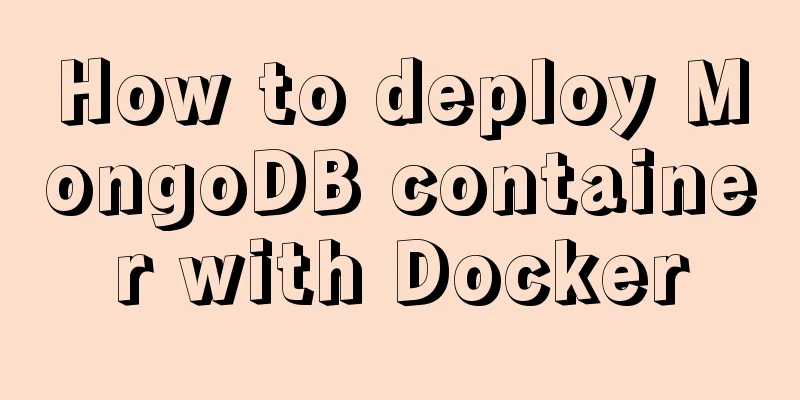Implementation of k8s node rejoining the master cluster

1. Delete nodeExecute kubectl delete node node01 2. If you execute the join directly at this time, an error will be reported. as follows:[root@k8s-node02 pki]# kubeadm join 192.168.140.128:6443 --token abcdef.0123456789abcdef --discovery-token-ca-cert-hash sha256:a3d9827be411208258aea7f3ee9aa396956c0a77c8b570503dd677aa3b6eb6d8 [preflight] Running pre-flight checks [WARNING SystemVerification]: this Docker version is not on the list of validated versions: 19.03.12. Latest validated version: 18.09 error execution phase preflight: [preflight] Some fatal errors occurred: [ERROR FileAvailable--etc-kubernetes-kubelet.conf]: /etc/kubernetes/kubelet.conf already exists [ERROR FileAvailable--etc-kubernetes-bootstrap-kubelet.conf]: /etc/kubernetes/bootstrap-kubelet.conf already exists [ERROR Port-10250]: Port 10250 is in use [ERROR FileAvailable--etc-kubernetes-pki-ca.crt]: /etc/kubernetes/pki/ca.crt already exists [preflight] If you know what you are doing, you can make a check non-fatal with `--ignore-preflight-errors=...` Solution:According to the error report, you can see that the port is occupied, and the configuration file and CA certificate have been generated, so you need to delete these configuration files and certificates, and kill the occupied port. It is recommended to back up before deleting. [root@k8s-node02 pki]# lsof -i:10250 COMMAND PID USER FD TYPE DEVICE SIZE/OFF NODE NAME kubelet 694 root 30u IPv6 26021 0t0 TCP *:10250 (LISTEN) [root@k8s-node02 pki]# kill -9 694 [root@k8s-node02 pki]# cd /etc/kubernetes/ [root@k8s-node02 kubernetes]# ls bootstrap-kubelet.conf kubelet.conf manifests pki [root@k8s-node02 kubernetes]# mv bootstrap-kubelet.conf bootstrap-kubelet.conf_bk [root@k8s-node02 kubernetes]# mv kubelet.conf kubelet.conf_bk [root@k8s-node02 kubernetes]# cd pki/ [root@k8s-node02 pki]# ls ca.crt [root@k8s-node02 pki]# rm -rf ca.crt 3. Execute the join again and an error occurs again.[root@k8s-node02 ~]# kubeadm join 192.168.140.128:6443 --token abcdef.0123456789abcdef --discovery-token-ca-cert-hash sha256:a3d9827be411208258aea7f3ee9aa396956c0a77c8b570503dd677aa3b6eb6d8 [preflight] Running pre-flight checks [WARNING SystemVerification]: this Docker version is not on the list of validated versions: 19.03.12. Latest validated version: 18.09 [preflight] Reading configuration from the cluster... [preflight] FYI: You can look at this config file with 'kubectl -n kube-system get cm kubeadm-config -oyaml' [kubelet-start] Downloading configuration for the kubelet from the "kubelet-config-1.15" ConfigMap in the kube-system namespace [kubelet-start] Writing kubelet configuration to file "/var/lib/kubelet/config.yaml" [kubelet-start] Writing kubelet environment file with flags to file "/var/lib/kubelet/kubeadm-flags.env" [kubelet-start] Activating the kubelet service [kubelet-start] Waiting for the kubelet to perform the TLS Bootstrap... [kubelet-check] Initial timeout of 40s passed. error execution phase kubelet-start: error uploading crisocket: timed out waiting for the condition Solution:Execute kubeadm reset to reset the child node [root@k8s-node02 ~]# kubeadm reset [reset] WARNING: Changes made to this host by 'kubeadm init' or 'kubeadm join' will be reverted. [reset] Are you sure you want to proceed? [y/N]: y [preflight] Running pre-flight checks W0710 10:22:57.487306 31093 removeetcdmember.go:79] [reset] No kubeadm config, using etcd pod spec to get data directory [reset] No etcd config found. Assuming external etcd [reset] Please, manually reset etcd to prevent further issues [reset] Stopping the kubelet service [reset] Unmounting mounted directories in "/var/lib/kubelet" [reset] Deleting contents of config directories: [/etc/kubernetes/manifests /etc/kubernetes/pki] [reset] Deleting files: [/etc/kubernetes/admin.conf /etc/kubernetes/kubelet.conf /etc/kubernetes/bootstrap-kubelet.conf /etc/kubernetes/controller-manager.conf /etc/kubernetes/scheduler.conf] [reset] Deleting contents of stateful directories: [/var/lib/kubelet /etc/cni/net.d /var/lib/dockershim /var/run/kubernetes] The reset process does not reset or clean up iptables rules or IPVS tables. If you wish to reset iptables, you must do so manually. For example: iptables -F && iptables -t nat -F && iptables -t mangle -F && iptables -X If your cluster was setup to utilize IPVS, run ipvsadm --clear (or similar) to reset your system's IPVS tables. The reset process does not clean your kubeconfig files and you must remove them manually. Please, check the contents of the $HOME/.kube/config file. 4. Finally, execute the join and the problem is solved.[root@k8s-node02 ~]# kubeadm join 192.168.140.128:6443 --token abcdef.0123456789abcdef --discovery-token-ca-cert-hash sha256:a3d9827be411208258aea7f3ee9aa396956c0a77c8b570503dd677aa3b6eb6d8 [preflight] Running pre-flight checks [WARNING SystemVerification]: this Docker version is not on the list of validated versions: 19.03.12. Latest validated version: 18.09 [preflight] Reading configuration from the cluster... [preflight] FYI: You can look at this config file with 'kubectl -n kube-system get cm kubeadm-config -oyaml' [kubelet-start] Downloading configuration for the kubelet from the "kubelet-config-1.15" ConfigMap in the kube-system namespace [kubelet-start] Writing kubelet configuration to file "/var/lib/kubelet/config.yaml" [kubelet-start] Writing kubelet environment file with flags to file "/var/lib/kubelet/kubeadm-flags.env" [kubelet-start] Activating the kubelet service [kubelet-start] Waiting for the kubelet to perform the TLS Bootstrap... This node has joined the cluster: * Certificate signing request was sent to apiserver and a response was received. * The Kubelet was informed of the new secure connection details. Run 'kubectl get nodes' on the control-plane to see this node join the cluster. 5. Check the master node and join successfully.[root@k8s-master01 ~]# kubectl get nodes NAME STATUS ROLES AGE VERSION k8s-master01 Ready master 120m v1.15.1 k8s-node01 Ready <none> 100m v1.15.1 k8s-node02 Ready <none> 83m v1.15.1 This is the end of this article about the implementation of k8s node rejoining the master cluster. For more relevant k8s node master cluster content, please search 123WORDPRESS.COM's previous articles or continue to browse the following related articles. I hope you will support 123WORDPRESS.COM in the future! You may also be interested in:
|
<<: MySQL column to row conversion and year-month grouping example
>>: A brief analysis of how to change the root password in Linux suse11 if you forget it
Recommend
Docker installation of MySQL (8 and 5.7)
This article will introduce how to use Docker to ...
Windows system mysql5.7.18 installation graphic tutorial
MySQL installation tutorial for Windows system do...
A brief summary of basic web page performance optimization rules
Some optimization rules for browser web pages Pag...
WeChat Mini Program Lottery Number Generator
This article shares the specific code of the WeCh...
Detailed explanation of two quick ways to write console.log in vscode
(I) Method 1: Define it in advance directly in th...
Vue+swiper realizes timeline effect
This article shares the specific code of vue+swip...
How to make a website front end elegant and attractive to users
The temperament of a web front-end website is a fe...
Do you know the weird things in Javascript?
Our veteran predecessors have written countless c...
Detailed explanation of CSS counter related attributes learning
The CSS counter attribute is supported by almost ...
How to Develop a Progressive Web App (PWA)
Table of contents Overview Require URL of the app...
The latest Linux installation process of tomcat8
Download https://tomcat.apache.org/download-80.cg...
How to Choose the Perfect Aloe Vera Gel? Perfect Aloe Vera Gel How to Identify Authenticity and Fakeness
The latest Perfect Aloe Vera Gel packaging box ha...
Detailed graphic explanation of how to use svg in vue3+vite project
Today, in the practice of vue3+vite project, when...
mysql 8.0.18.zip installation and configuration method graphic tutorial (windows 64 bit)
Regarding uninstalling the previously installed v...
In-depth explanation of various binary object relationships in JavaScript
Table of contents Preface Relationships between v...









